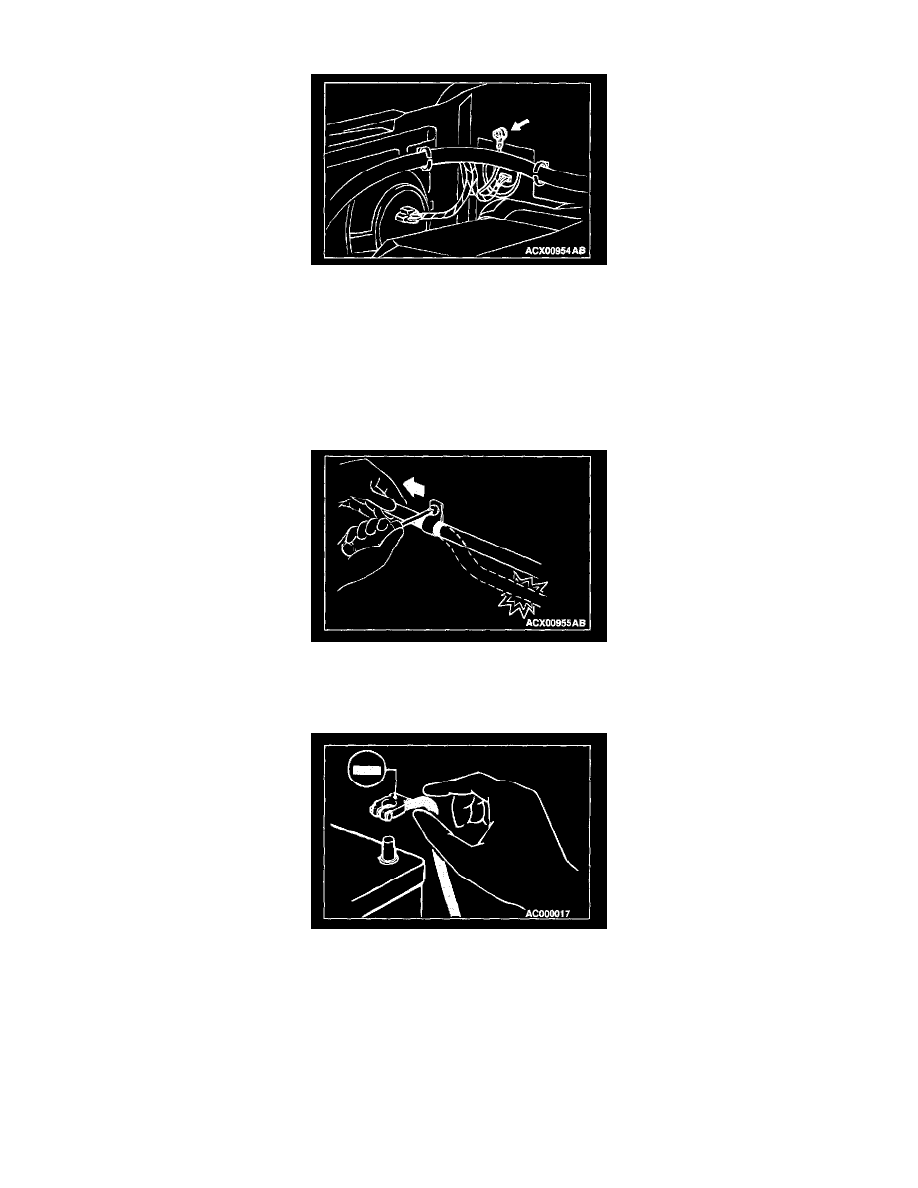Stratus Coupe L4-2.4L VIN G (2003)

Cable and Wires Check
1. Check connections for looseness, rust, and stains.
2. Check terminals and wires for corrosion by battery electrolyte, etc.
3. Check terminals and wires for open circuit or frayed wires.
4. Check wire insulation and coating for damage, cracks, and wear.
5. Check conductive parts of terminals for contact with other metallic parts (vehicle body and other parts).
6. Check grounding parts to verify that there is complete continuity between attaching bolt(s) and vehicle body.
7. Check for incorrect wiring.
8. Check that harnesses are secured to prevent contact with sharp edges and corners or hot parts (exhaust manifold, pipe, etc.).
9. Check that harnesses are secured firmly to provide enough clearance from the fan pulley, fan belt, and other rotating or moving parts.
10. Check that the harness between fixed parts (such as the vehicle body) and vibrating parts (such as the engine) are long enough to allow for
vibration and movement.
Battery Handling
WARNING: Battery posts, terminals and related accessories contain lead and lead compounds. WASH HANDS AFTER HANDLING
When checking or servicing does not require power from the vehicle battery, be sure to disconnect the cable from the battery (-) terminal. This will
prevent problems that could be caused by a short circuit. Disconnect the (-) battery terminal first and reconnect it last.
Cautions In Event of Blown Fuse
When a fuse is blown, there are two probable causes. One is that it is blown due to flow of current exceeding its rating. The other is that it is blown due
to repeated on/off current flowing through it. Which of the two causes is responsible can be easily determined by visual check as described below.
